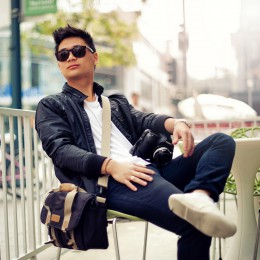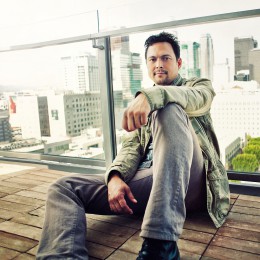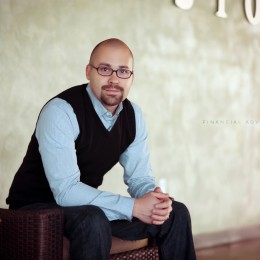Saturday 22 December 2018
Saturday 16 December 2017
Cluj-Napoca , commonly known as Cluj, is the fourth most populous city in Romania, and the seat of Cluj County in the northwestern part of the country. Geographically, it is roughly equidistant from Bucharest (324 kilometres (201 miles)), Budapest (351 km (218 mi)) and Belgrade (322 km (200 mi)). Located in the Someșul Mic River valley, the city is considered the unofficial capital to the historical province of Transylvania. From 1790 to 1848 and from 1861 to 1867, it was the official capital of the Grand Principality of Transylvania.
As of 2011, 324,576 inhabitants lived within the city limits (making it the country's second most populous at the time, after the national capital Bucharest), marking a slight increase from the figure recorded at the 2002 census.The Cluj-Napoca metropolitan area has a population of 411,379 people, while the population of the peri-urban area (Romanian: zona periurbană) exceeds 420,000 residents.The new metropolitan government of Cluj-Napoca became operational in December 2008. According to a 2007 estimate provided by the County Population Register Service, the city hosts a visible population of students and other non-residents—an average of over 20,000 people each year during 2004–2007. The city spreads out from St. Michael's Church in Unirii Square, built in the 14th century and named after the Archangel Michael, the patron saint of Cluj-Napoca. The boundaries of the municipality contain an area of 179.52 square kilometres (69.31 sq mi).
Cluj-Napoca experienced a decade of decline during the 1990s, its international reputation suffering from the policies of its mayor at the time, Gheorghe Funar.Today, the city is one of the most important academic, cultural, industrial and business centres in Romania. Among other institutions, it hosts the country's largest university, Babeș-Bolyai University, with its famous botanical garden; nationally renowned cultural institutions; as well as the largest Romanian-owned commercial bank.In 2015, Cluj-Napoca was European Youth Capital.
As of 2011, 324,576 inhabitants lived within the city limits (making it the country's second most populous at the time, after the national capital Bucharest), marking a slight increase from the figure recorded at the 2002 census.The Cluj-Napoca metropolitan area has a population of 411,379 people, while the population of the peri-urban area (Romanian: zona periurbană) exceeds 420,000 residents.The new metropolitan government of Cluj-Napoca became operational in December 2008. According to a 2007 estimate provided by the County Population Register Service, the city hosts a visible population of students and other non-residents—an average of over 20,000 people each year during 2004–2007. The city spreads out from St. Michael's Church in Unirii Square, built in the 14th century and named after the Archangel Michael, the patron saint of Cluj-Napoca. The boundaries of the municipality contain an area of 179.52 square kilometres (69.31 sq mi).
Cluj-Napoca experienced a decade of decline during the 1990s, its international reputation suffering from the policies of its mayor at the time, Gheorghe Funar.Today, the city is one of the most important academic, cultural, industrial and business centres in Romania. Among other institutions, it hosts the country's largest university, Babeș-Bolyai University, with its famous botanical garden; nationally renowned cultural institutions; as well as the largest Romanian-owned commercial bank.In 2015, Cluj-Napoca was European Youth Capital.
Ankara; is the capital of Turkey and the country’s second-largest city. It was formerly called Angora. The city is situated on the Ankara River, a tributary of the Sakarya, in the heart of the central Anatolian plateau, 220 miles southeast of Istanbul. It is spread out at the foot and along the slope of a mountain that rises to 3,208 feet (978 meters) above sea level.
Ankara is a cosmopolitan city with impressive public buildings, wide avenues, parks, an opera, and an international airport. The city is the site of the University of Ankara, founded in 1946, and of the British Institute of Archaeology, opened in 1948. Today, there are several universities in Ankara.
Because of its location in central Turkey, Ankara is an important commercial city. It is the processing and marketing center for the surrounding agricultural area, which has long been celebrated for the breeding of long-haired goats and for the production of Angora wool (mohair). Textiles, vaccines, cement, tiles, leather goods, and beer are manufactured there.
History: Known to the ancients as Ancyra, the city was from the 200’s b.c. the capital of Galatia, which, after 25 b.c., was a Roman province. The city was occupied successively by the Persians, Arabs, Seljuk Turks, and Crusaders. In the 1360’s it was captured by the Ottoman Turks. Sultan Bajazet I was defeated in the area in 1402 by Tamerlane, the Mongol conqueror. Recovered by the Turks in 1431, the city remained part of the Ottoman empire until the empire’s collapse after World War I.
Ankara was chosen as the site of a provisional government set up by Kemal Atatürk and the Turkish Nationalists in 1920. The choice was made partly as a break with tradition and partly because of Ankara’s central location. In 1923 the seat of government was officially transferred to Ankara from the former capital, Istanbul (Constantinople ). The name was officially changed from Angora to Ankara in 1930.
Sakarya city is an important tourism center of the Marmara Region. First of all beaches lies along Black Sea shores, lakes, rich forests and plateaus, valley and canyons, hot springs and mineral waters springs are natural values that Sakarya has.
SakaryaMuseum: The museum building, which is in Sakarya Province, Merkez District, Semerciler Quarter, Milli Egemenlik Street, across the station, is established on an area of 1290 m2 with the garden.
The building that has been constructed by Major Baha Bey, Chairman of Military Service Office in three floors with the ground floor in 1910 – 1915, has been purchased by Hasan Cavit Bey, who was a close friend of Atatürk and who was a deputy. His house, where Atatürk has met his mother in June of 1922 and where they stayed for five days, has been damaged in the earthquake that took place in 1967. The house, which has been registered as a civil architecture sample in 1983, has been nationalized by our ministry and reconstructed as the museum building in compliance with its original and opened to visit in 1993.
In the ground floor of the building, service offices and boiler room, in the first floor the director’s room and an exhibition hall of 85 m2 and in the second floor a conference hall of 50 persons are located. In the garden of the museum, the architectural parts found in the borders of Sakarya province, belonging to Roman and Byzantine Periods, grave stones, altars, stones with inscriptions, ostotech, cooked earth storage jar and column bases are exhibited.
In the exhibition hall of the museum, a group of archeological works belonging to the Roman and Byzantine Periods and ethnographic works belonging to the Ottoman and Republic Periods are exhibited. Among the archeological works, there are flat hand axes, cooked earthenware pots, essence and tear bottles and metal and glass works.
Among the ethnographic works, which are selected from the Ethnography Museums of Bursa, Amasya, Konya, Tokat and Ankara, there are goods used by the Grand Leader Atatürk and firing and cutter guns, copper goods, seals and hand ornaments belonging to the Ottoman and Republic periods.
Kocaeli is the city that takes place on the highway and railroad connecting Istanbul to Anatolia. The name of the city was Nicomedeia in the times of Roman Empire. Today it is a very industrial center for Turkey.
The Saatçi Ali Efendi Mansion in the city, which is a very interesting example of 18th century Ottoman Civil Architecture, had been restorated and now being used as Ethnography Museum.
“Pişmaniye” which is the local dessert of kocaeli is made by giving the sugar the shape of fibre.
Hereke, which is a district at the east side of Kocaeli is a very important carpet production center. The carpets of Hereke are very famous all around the world for their beauty and high quality. These carpets are the most expensive carpets of the Istanbul Carpet Markets.
Kerpe, Kefken and Kovanağzı, at the north of Kocaeli near Black Sea, are places that ecstatic places with their sores and small and comfortable hotels.
Monday 11 December 2017
Find out about our expert-led Istanbul tour. See our full schedule of escorted Turkey tours.
It’s hard not to speak in superlatives when describing this epic cradle of civilisation. No other city in the world has been besieged so many times, so greatly was it coveted by peoples outside its walls. No other city on earth sits astride two continents. Not just age old, for centuries it was the most multicultural city in Europe, on whose streets more than a dozen languages were spoken, from Italian to Persian, Greek to Arabic. Above all it was a city made for trade, built for business.
Established on a triangular spit of land (the area today dominated by the Blue Mosque and Aya Sofya), the original town was surrounded by water on three sides. This was no shy retiring little colony, but a confident centre of commerce designed to govern one of the most significant waterways in the world, the Bosphorus. Control of this narrow channel connecting the Mediterranean and the Black Sea, ensured political clout, a constant stream of innovative ideas, and of course money, in the shape of traffic and taxes.
Sailing on the Bosphorus today affords a perfect opportunity to look at the city as sailors would have seen it centuries ago, its seven hills bejewelled with the most splendid mosques. Daily boat trips stop at a number of points along its length, like Anadolu Kavagi almost at the entrance to the Black Sea. Here you can leave the ferry, eat at one of the fish restaurants by the shore, and wander up to the ruined castle for breath taking views and a leap of imagination back to the time when Jason was sailing below in search of the Golden Fleece.
Nowadays in Turkey oil tankers jostle with passenger ferries on the waters of the Bosphorus, but their numbers are but a tiny fraction of the ships that used to flock to Constantinople. In Ottoman days fifteen thousand small boats worked in the harbour, obscuring its very waters. Frenetic it may have been but disorganised it certainly wasn’t. When it came to money, the city was a strict and disciplined governess. In the Golden Horn, the capital’s sheltered and superb deep water harbour, boats moored directly by the shore to unload, and their cargoes were carefully inspected by a waiting army of customs officials that calculated their payable duty.
When the Byzantine Empire and the shattered city of Constantinople finally fell to Mehmet the Conqueror and his Ottoman army in 1453, shockwaves reverberated throughout Western Europe and the whole Christian world. Yet Mehmet was a visionary. Just as Constantine had done over a millennium earlier, re-founding Byzantium as his new capital, a new Rome, Mehmet was determined to restore the city’s fortunes and place it on an even higher pedestal.
He issued a rallying call for people of all races and religions to come and live and work in the city. It was an open door policy based on tolerance and freedom designed to invite skills, creativity, and energy. As a 15th century pasha advised the Sultan, trade would set Constantinople and the Ottoman Empire on the road to success:
“Look With Favour On The Merchants In The Land; Always Care For Them; Let No One Harass Them… For Through Their Trading The Land Becomes Prosperous And By Their Wares Cheapness Abound In The World; Through Them The Excellent Fame Of The Sultan Is Carried To Surrounding Lands And By Them The Wealth Within The Land Is Increased.”
Within a few decades a whole host of foreign firms had stepped over the welcome mat and set up shop. Armenians flourished as jewellers, craftsmen, and traders. Jews became successful perfumers, blacksmiths, and bankers. Italians were busy importing silk, paper, and glass. Even the English were invited to the party when in 1579 the Sultan Murad III wrote to Elizabeth I welcoming English merchants to come and operate in his free trade empire.
Many of these businesses operated out of the covered bazaar built by Mehmet the Conqueror, which still stands at the very heart of the Grand bazaar in Istanbul. You can still sense something of the sights, smells, and sounds of what old Constantinople must have been like if you take some time to explore this labyrinthine city within a city. Down the slope to the Spice Bazaar the lanes are crammed with tiny shops and workshops full of artisans banging out their respective trades. They give a small hint of the cornucopia of goods that once came to the imperial capital, from every corner of the globe.
For centuries the Ottoman Empire was the middleman of the world, its famed merchants uniting three continents – Europe, Africa, and Asia, as far east as China. The bounty of the world didn’t arrive only by sea. All roads led to Constantinople. Caravans of camels and mules up to 2,000 strong arrived every month converging from all points of the horizon – Poland to Arabia, France to Persia.
Constantinople had been a magnet for both goods and people long before the Turks arrived. A regular stopping place for Christian pilgrims on the way to Jerusalem, once the Byzantine emperor Justinian built the Haghia Sophia in the 6th century, the capital itself became a site of pilgrimage and a top tourist destination. The Haghia Sophia wasn’t any old place of worship, it was the greatest church in Christendom for almost a thousand years. Converted to a mosque by Mehmet the Conqueror, today it stands as a breath-taking museum open to people of all faiths.
All around the Aya Sofya are solid reminders of the city’s longevity and its glorious past. A few hundred metres to the north is Topkapi Palace, where the Ottoman sultans lived and governed in opulent splendour. A few hundred metres to the south is the Blue Mosque, whose slender minarets define the city’s skyline. Beside that is the old Roman hippodrome, garnished with an Egyptian obelisk. Walking around Istanbul it’s hard to imagine another city that can rival it as an open air museum.
Yet this is no ghost town, no dyed in the wool city trading on old memories. Following the demise of the Ottoman Empire, its renaming as Istanbul and its demotion from capital city, the old city is once again on the rise. Although Ankara is now the political capital of Turkey, situated at the country’s geographic heart, Istanbul dwarves it in population, and also in vibrancy.
Adorned with some of the finest architectural and artistic wonders in the world, and with an extraordinary historic legacy on every street corner, Istanbul remains Turkey’s real social, artistic, and commercial hub, brimming with vitality and activity. Growing at an exponential rate, from 3 million in 1970 to a behemoth with some 11 million inhabitants today, the city continues to be the ultimate cultural crossroads. Its lure and pull are stronger than ever – for a great many people its streets still appear paved with gold.



















